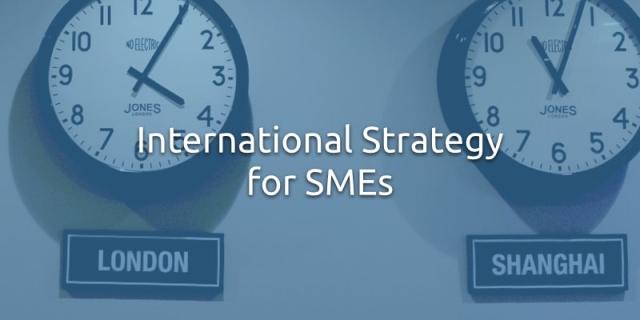International strategy and global expansion is getting more important for SMEs every day. The opportunities in new consumer markets, access to more affordable talent pools, and decreased manufacturing expense can help propel SMEs past growth plateaus and can act as a hedge against domestic market volatility. Larger enterprises have benefited from global markets and it’s quickly becoming apparent for SMEs that an agile approach to global expansion can accelerate growth and decrease risk. The thing is, taking the step into global markets is by no means an overnight decision. We've put together eight big picture ideas on how we see SMEs successfully expanding overseas:
- Incremental and Agile Approach Versus “Waterfall”
- Many SMEs are seeing success in taking a Lean or MVP approach to their international expansion strategy versus setting a 10-year plan that doesn’t adapt as the company learns in-country
- Test market from a sales and operations perspective first to see if the market can justify further investment in infrastructure and fixed assets.
- The key is to have an overall strategy and goals, but keep the flexibility to adapt to changes
Light Infrastructure Footprint
- As a follow-up to the previous point, many SMEs find more success if they hold off on any infrastructure investments or hard costs in foreign markets until their operation has matured in the market.
Strong Full-Time Human Presence in Country
- Strong employees (both local and expats) are a SMEs best resource in a new market. They can pinpoint other unforeseen opportunities, evaluate market penetration plans on a day-to-day basis, and adjust where necessary. Contractors on average do not typically have the same level of buy-in to company objectives and can miss opportunities.
- Develop and document procedures to embrace foreign employees. Too many companies treat them as fringe-employees and don’t provide them with the proper resources, oversight, and high-level of engagement
Clear Product//Market Strategy that Includes:
---(from Bell et al.: Internationalization and Business Strategy)
- the development of ‘leading edge’ products to enable the company to expand from its existing markets into new countries and regions
- related diversification into systems that can be incorporated into other companies’ products; and
- the appointment and use of ‘associates’ in particular overseas markets to monitor developments, identify opportunities and maintain contacts with decision makers.
- Also, if a product is doing well domestically, don’t automatically assume that it will do better overseas.
Use Revenue Gains in International Markets to Fund Domestic Reinvestment in Product Development
- Sometimes competition in your domestic markets can pinch cash flow enough to limit your ability to reinvest in product development. Choose international markets to get your standard product/service where competition is low. Then, use that extra revenue to reinvest in product domestically, and continue to gain market share. Picking the right international market to get your product into in a Lean fashion could help you keep outside capital sources at bay and increase your equity.
Utilize Technology and Service Oriented Approach to Accelerate
- Video hangouts, online project management tools, and the sharing economy have made it so accountability, communication, and risk mitigation can be managed from thousands of miles away and you do not have to reinvent the wheel.
Have a Clear, Proactive International Strategy Versus Being Reactive
- Many traditional SMEs tend to react to an outside opportunity which forces an ad hoc international strategy. Typically this leads to internal reluctance from management, slow pace, and single market approach. Having a clear strategy to attack multiple markets at once and getting the internal buy-in from the team leads to much higher success rates in country and a faster pace of international growth
- The number one success factor for developing international markets is the level of support from the senior executive team
Pick the Right Global Expansion Partner
[divider line_type="Small Line" custom_height="30"]
We have many SME clients who are using an International PEO (Professional Employer Organization) as a cornerstone to their international strategy. Velocity Global's International PEO solution assists smaller companies and larger organizations alike in mitigating risk, increasing flexibility, and accelerating time to market by up to 90%. Could your organization benefit from our quick, compliant, and cost effective global expansion solution? Let's chat—and let's get you global.



